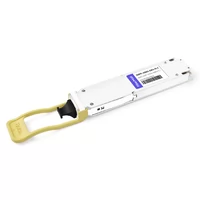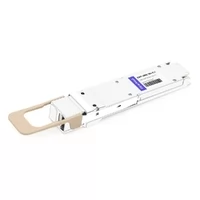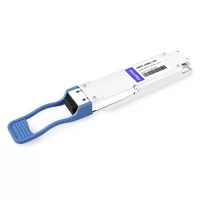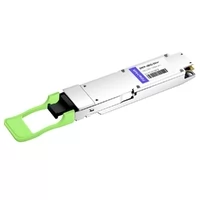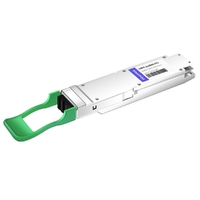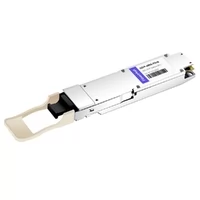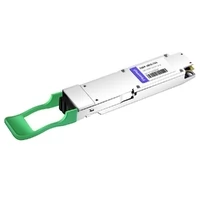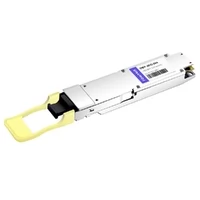As data transmission technology has improved, high-density cabling solutions have become more efficient and compact. The Molex Quad Small Form-factor Pluggable (QSFP) is a significant development in this area. It is a connector that increases bandwidth and connectivity for data centers and telecommunication systems. In this paper, we will discuss its uses, specifications, advantages of use, and effects on today’s networks. This article aims to provide an understanding of the capabilities of such high-density cables so readers can learn how they may improve their operational efficiency through better performance at work or school.
Table of Contents
ToggleWhat is a Molex QSFP?
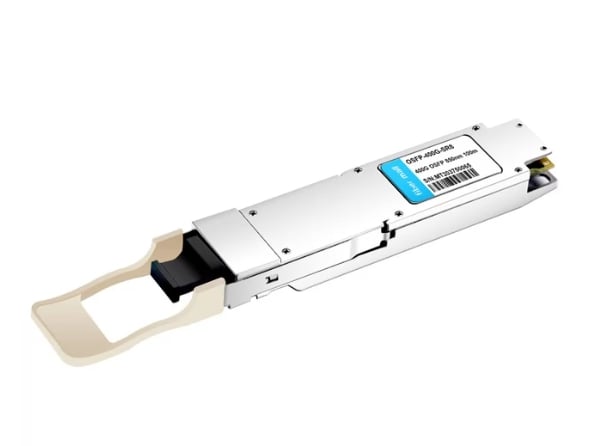
Understanding the QSFP Connector and Its Components
The Molex QSFP (Quad Small Form-factor Pluggable) connector supports high-speed data transmission using multiple data lanes in one module. Normally, each QSFP connector has four separate channels that can transmit at rates of up to 25 Gbps, resulting in an aggregated bandwidth of as much as 100 Gbps, which is necessary for contemporary transceivers. The connectors contain several key parts like housing, optical or electrical interface, and retention mechanism, designed to provide reliable connections under harsh conditions. Moreover, the modular nature of the QSFP allows for easy integration and upgrades, making it a versatile option for data centers looking for scalable connectivity solutions. Combining these features – high performance, compact size, and rugged design – makes the device ideal for modern networking infrastructures.
How Does the Molex QSFP Interconnect System Work?
The Molex QSFP interconnect system is based on high-speed serial data transmission through several lanes. There are four independent data paths in each QSFP module, which allows simultaneous, non-interfering communication. Depending on application requirements, the module connects directly to a compatible transceiver or switch and uses copper or optical cables. Electrical signals are converted into optical signals (for fiber connections) while maintaining electrical integrity (for copper connections) across the specified transmission medium to transmit data. The intelligent design of the QSFP system, including its integrated digital diagnostics, enables real-time monitoring of performance indicators such as temperature and signal integrity, thus ensuring optimum functioning and facilitating effective troubleshooting. Given its ability to provide high bandwidth at low latency, Molex QSFP interconnect systems are important components in modern-day high-performance networking setups.
Common Uses of Molex QSFP in Data Centers
The Molex QSFP interconnect system is primarily used in data centers for high-density applications that require efficient and fast data transfer. This can be applied in different ways, such as:
- High-Speed Networking: QSFP modules help create high-speed connections between switches and routers, supporting data rates up to 400Gbps. This is essential for modern cloud computing and large-scale data processing.
- Storage Area Networks (SANs) often need specialized interconnect systems and cable assemblies to maintain optimal performance.: In SAN environments, Molex QSFP modules enable fast access to storage devices by servers, optimizing overall storage performance while reducing latency.
- Server Connectivity requires robust interconnect systems and cable assemblies that efficiently handle high data rates.: The compactness of the QSFP module allows for more ports within server racks, thus maximizing space use and ensuring robust connections between blade/rack servers.
- Data Aggregation: Multiple sources of aggregated data traffic are used by QSFPS interconnects, hence optimizing bandwidth usage and improving efficiency in network-centric applications.
- Virtualized Environments: As virtualization becomes increasingly popular among data center architectures, Molex QFSP modules sustain the increasing workload and bandwidth demand that Virtual Machines (VM)and cloud services need.
Molex QSFP connectors ensure seamless connectivity, better scalability, and overall network performance within a data center.
Why Choose Molex QSFP for High-Density Applications?
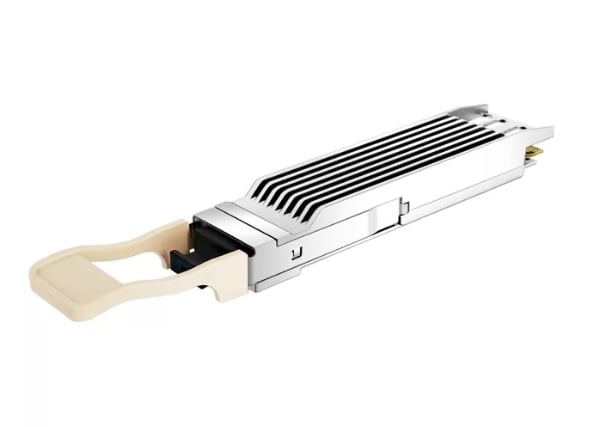
Designed for High-Density Applications: Benefits and Features
Molex QSFP modules have been designed to meet the requirements of high-density applications in modern data centers. Here are some of the key features and benefits that make them ideal for use:
- Small Size: The QSFP modules are created to take up minimal physical space while providing high data rates. This small size helps ensure optimal airflow and simplifies cable management, which is critical in high-density settings.
- Better Thermal Performance: Molex QSFP modules have advanced thermal management systems that work well even when temperatures get too hot. This ensures reliability over time without affecting performance levels.
- Scalability: QSFP’s modular structure allows it to easily upgrade current networks as needed or expand them for future growth. As demand changes, users can increase port capacity and bandwidth without major infrastructure modifications.
- Detection and Correction of Errors: These connectors use sophisticated protocols to minimize errors during data transmission, which enhances data transfer integrity and reliability in essential applications.
- Interoperability and Compatibility: Standardized by Molex, among other companies, QSFP modules ensure compatibility between different networking devices. This interoperability makes integration into preexisting systems easier and also promotes supplier diversity.
Organizations looking to improve their network capabilities while sustaining high-density configurations in data-heavy environments can use Molex QSFP modules since they combine all these advantages into one robust solution.
Maximizing Performance with High-Speed Data Rates
Companies must consider various essentials to achieve high performance at high-speed data rates. First and foremost, it is important to choose the right cabling and connectors. Fiber optic cables and good-quality connectors with low loss can reduce signal degradation greatly while increasing transmission efficiency. Secondly, bandwidth utilization can be improved using advanced technologies like multiplexing, which allows multiple signals to be sent over one cable simultaneously. Thirdly, consistently monitoring and managing network performance metrics should be done to detect possible bottlenecks or problems in time, ensuring optimal speed and reliability. Finally, maximizing performance throughout the network infrastructure requires hardware such as switches and routers capable of supporting necessary data rates or protocols.
Application in 400G Networks for Future-Proof Solutions
The transition to 400G networks is a major shift in the data center and telecommunications infrastructure that provides a scalable solution for exponentially growing bandwidth demand. Leading solutions highlight using 400G optical transceivers from reputable vendors that guarantee compatibility with new standards and protocols. These high-density transceivers are designed to support lower bandwidth systems and provide seamless upgrades, thereby protecting investments and future-proofing network architectures.
Coherent optics and advanced modulation formats can achieve data transmission over longer distances. Additionally, AI-driven network management tools and automation make it easier to configure and monitor 400G deployments. Organizations can use these technologies to build networks that can withstand changes in data requirements while increasing operational efficiency within a rapidly changing digital environment.
How Does Molex QSFP Compare to Other Cable Solutions?
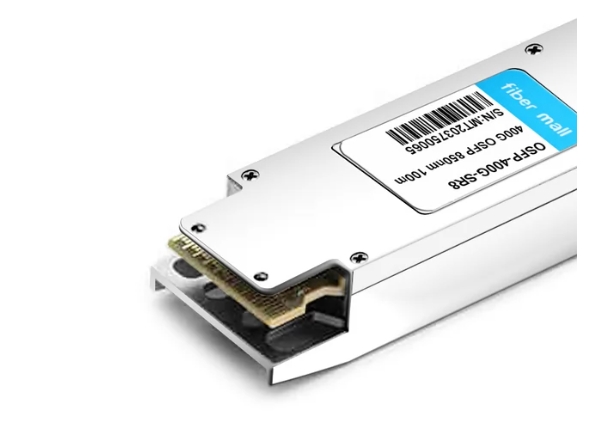
Compatible Solutions: QSFP vs. QSFP-DD
Despite being regarded as high-speed connectivity solutions in data centers, QSFP and QSFP-DD are very different in capacity and capabilities. The QSFP (Quad Small Form-factor Pluggable) standard typically supports a maximum of 40G per port with four lanes, each transmitting at 10G. On the other hand, the QSFP-DD (Double Density) standard doubles electrical interfaces, which allow for eight lanes, thus enabling data rates up to 400G that cater to systems requiring high densities. This improvement not only meets the increasing demand for bandwidth but also preserves reverse compatibility with existing QSF modules.
Furthermore, since they share a similar footprint as their predecessor’s module type —the QSF—device switches can be used more efficiently without having a larger chassis by using high-density deployments. Therefore, the increased capability makes it an ideal solution for modern data center applications, especially those looking to future-proof scalable infrastructure in high-bandwidth environments, ensuring businesses stay ahead of constantly evolving digital ecosystems.
Active Optical Cable (AOC) vs. Passive Cable Assemblies
While Active Optical Cables (AOCs) and Passive Cable Assemblies are essential to fast network connections, they differ in design and performance capabilities, affecting their length and overall efficiency. AOCs consist of fiber optic cables with integrated transceivers on either end that allow them to change electrical signals into optical signals and vice versa. Because of this construction, AOCs can transmit data over greater distances—usually 300 meters or more—while preserving high quality over long runs. They are handy for data center applications where space is tight but signal quality matters most.
On the other hand, Passive Cable Assemblies contain only fiber optic strands without built-in transceivers. These cables tend to be simpler in structure and cheaper than AOCs; however, they have shorter reach (typically limited to around 100 meters) before significant degradation occurs in the transmitted signal’s quality. Therefore, passive cables should generally only be used when cost savings are critical for a project and its installation distance does not exceed those limits, which would result otherwise from using an active version instead. The decision between choosing either type ultimately comes down to specific needs within your infrastructure, such as how far apart devices will be located from one another, along with what level of performance you can afford, given budget constraints associated with different options available today!
Pluggable Optics and Their Impact on Network Design
Network design has been transformed due to pluggable optics, which offer convenience, scalability, and ease of maintenance. These modular components can be found in many forms, such as SFP, SFP+, or QSFP+. They allow network engineers to quickly accommodate changing bandwidth requirements without replacing the entire system. Organizations can exchange optical modules so that their infrastructure supports higher speeds over longer distances when necessary while minimizing capital expenditure. Additionally, this standardization type increases equipment interoperability between various manufacturers, making procurement strategies easier and improving overall network resilience. Therefore, using pluggable optics in network engineering creates cost efficiency and ensures readiness for future developments within a constantly evolving technology environment.
How do you integrate Molex QSFP into your network?
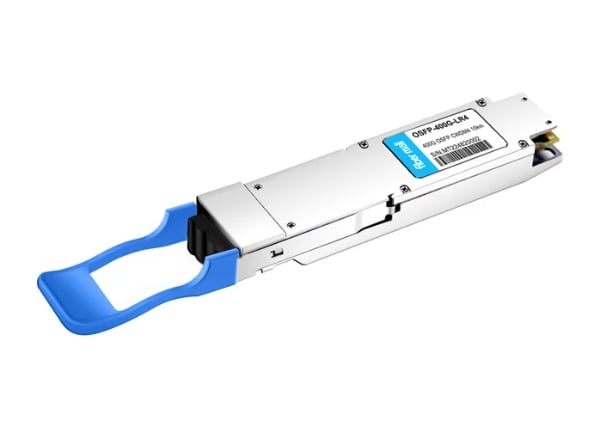
Step-by-Step Guide to Installation
- Gathering your resources: Before starting anything, you must ensure you have all the right parts. This includes the Molex QSFP transceiver, compatible modules for it, and required optical or copper cables. Next, check if your router or switch can support QSFP standards.
- Switch off devices: To prevent interference with other devices connected to the network where this module will be inserted, turn off all devices.
- Putting in a QSFP Module: Take care when aligning the module with its corresponding slot on a networking device. Insert gently until you hear a click sound, indicating it’s well seated.
- Wiring up: Securely attach suitable optical or copper cables to the QSFP module after ensuring the correct orientation of the connectors used to avoid damage.
- Power Up Equipment: Turn on the network equipment after securely connecting the module and cables. Watch for any signs of successful transceiver detection in the device, such as LED status indicators.
- Configuration: If needed, access the configuration settings of your network device to configure QSFP modules according to your network requirements. This may include link aggregation and port setting configurations.
- Testing: Conduct a network test post-configuration to check for connectivity issues or latency problems with length-appropriate cable assemblies. This would indicate that everything is working fine with the QSFP module.
- Documentation: Lastly, installation steps and modifications were documented during this process to be referenced later when maintenance is required or troubleshooting needs arise. This will help manage networks better and make it easier if anything goes wrong.
Key Considerations for Network Interface Compatibility
Compatibility of network interfaces can be determined by consideration of Gbps requirements, cable distance, and transceiver types, among other factors:
- Compliance with Standards: Ensure that the devices (e.g., switches, routers, and transceivers) comply with relevant industry standards, such as IEEE 802.3 for Ethernet connections or MSA (Multi-Source Agreement) for optical modules. This will allow interoperability between different hardware vendors.
- Supported Protocols: Ensure that your network infrastructure supports Fibre Channel or InfiniBand storage applications and specific Ethernet standards (10GbE, 40GbE, 100GbE) required by data throughput needs.
- Types of Physical Connectors: Look at what connectors are used by network devices and cables. Common connectors include LC, SC, and MPO, which are used for optical connections, while RJ-45 is used for copper connections. If there is a mismatch in connector types, compatibility issues may arise, thus requiring additional adapters to be purchased.
These considerations during the selection and installation stages will help organizations reduce risks related to connectivity problems, resulting in better network performance.
Ensuring Optimal Performance with Proper EMI Shielding
Network interfaces can be significantly affected by electromagnetic interference (EMI). To prevent these situations, it is important to use suitable EMI shielding. These tips will help achieve the best performance:
- Shielded Cables: Use shielded twisted pair (STP) cables or optical fibers with heavy-duty shielding. This cable type helps reduce external electromagnetic fields and crosstalk between adjoining cables.
- Grounding Procedures: Proper grounding of equipment and cable infrastructure is crucial. All shielded connections should be grounded to provide a common reference point, which allows unwanted electromagnetic energy to dissipate securely.
- Enclosure Design: Metallic enclosures for critical networking hardware can prevent EMI entry. These casings must be adequately grounded and constructed to create Faraday cages that protect delicate devices from outside sources of electromagnetic radiation.
- Placement and Routing strategies optimize network efficiency.: Cables should also be positioned strategically away from electromagnetic solid field motors, generators, etc. Moreover, appropriate routing practices like avoiding parallel runs with power cables help minimize potential exposure even more.
By incorporating these practices into their network interface design and implementation, organizations can improve reliability and performance while reducing risks related to EMI.
What Are the Cutting-Edge Features of Molex QSFP?
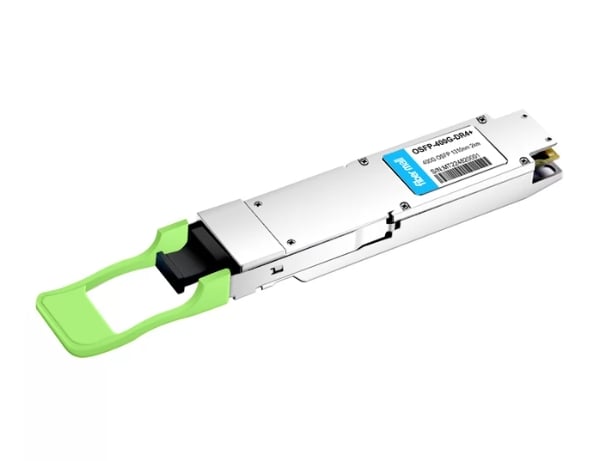
Exploring the Electrical and Optical Interfaces
Molex QSFP (Quad Small Form-factor Pluggable) interfaces utilize cutting-edge technology to enable high-speed data transfer in data centers and networking environments. Through different configurations, such as QSFP28 or QSFP-DD, this electrical interface can support data rates of up to 400 Gbps, guaranteeing it can work with current and future networking needs. Differential signaling combined with multiplexing methods are used by these electrical interfaces to optimize bandwidth while latency is minimized.
From an optical standpoint, Molex QSFP modules most often use multi-mode fiber optics or single-mode fiber optics that allow for long-distance transmission without losing signal quality. These optical interfaces employ LC duplex connectors that ensure a secure connection and simplify installation and maintenance. In summary, incorporating electrical solid and optical interfaces within Molex QSFP modules makes them suitable for new applications like cloud computing or high-performance computing.
Data Center Applications: Efficiency and Scalability
Data centers can become more efficient and scalable with Molex QSFP modules. They contribute to high-density configurations that save space and power, which is important in an energy-aware world. The capability of these systems to handle high data rates ensures they can be seamlessly scaled up or down depending on bandwidth demand without requiring any significant changes to the infrastructure. Additionally, using advanced cooling methods as well as optimised designs helps them effectively manage heat dissipation for optimal performance under heavy loads. Also, their support for different networking standards allows organizations to gradually upgrade their systems while getting the most out of previous investments. Cloud-based solutions are increasingly being adopted in data centers; therefore, flexible and high-performance Molex QSFP technology is crucial in future-proofing network infrastructures.
High-Density Connectors: Redefining Performance Benchmarks
High-density connectors are key in redefining performance standards in many applications like telecommunications, data centers, and high-performance computing. These connectors enable higher data transmission rates while consuming less space through advanced materials and engineering designs. Innovative locking mechanisms improve reliability by decreasing the chances of connection failure under severe vibrations. Moreover, manufacturers increasingly adopt blind-mate abilities and modular designs that permit flexible configurations and future upgrades. Within high-density connectors, thermal management emphasizes enhancing signal integrity and improving system longevity since it reduces heat-related performance deterioration. With industries demanding more bandwidth within limited physical spaces, these connectors have become critical solutions driving advancements in connectivity standards for better overall efficiencies across systems.
Reference Sources
Frequently Asked Questions (FAQs)
Q: What is Molex QSFP and how is it applied?
A: Molex QSFP (Quad Small Form-Factor Pluggable) is a high-density cable solution designed to transmit data at high performance over Ethernet and Infiniband networks. It combines several channels, greatly increasing bandwidth and data rates.
Q: What are the key characteristics of the Molex QSFP-DD interconnect system?
A: The Molex QSFP-DD interconnect system has 8 lanes that can transmit data up to speeds of 112G PAM-4 or 56G NRZ per lane. It has a small form factor for high-density applications, offers different connectors and cable assemblies, and ensures superior reliability and performance in data transmission.
Q: How does the bandwidth capability of the QSFP-DD benefit data centers?
A: Modern data centers require more bandwidth; thus, they need something to handle such demands. This was created by supporting aggregate rates of up to 400Gbps, which ensures the efficient handling and transmitting of information necessary for cloud computing applications and big, fast networking.
Q: What is unique about the QSFPDD cage system?
A: To guarantee dependable communication, minimal electromagnetic disturbance must be ensured through excellent shielding provided by this cage system. Its design also allows it to fit into many densely populated areas, making it suitable for contemporary arrangements found within storage facilities.
Q: Is there any compatibility between Molex quips dd cages and previous infrastructures used before now?
A: Indeed, yes. Existing qsfp cages are backward compatible; therefore, seamless integration into presently used systems will not pose any challenge whatsoever. Upgrading network capabilities while avoiding total replacement costs associated with entire structures becomes possible because of these compatibilities.
Q: Why is PAM-4 and NRZ transmission important in QSFP-DD?
A: Data transmission uses encoding schemes called PAM-4 (Pulse Amplitude Modulation with 4 levels) and NRZ (Non-Return-to-Zero). In high-speed applications with limited bandwidth, PAM-4 can achieve twice the data rate of NRZ while maintaining higher throughput efficiency.
Q: What makes Molex QSFP a high-density solution?
A: Molex QSFP enables high-density data transfer by supporting multiple fast channels within a small connector system. This feature reduces the total number of connectors needed, optimizing space in data centers and decreasing the overall system footprint.
Q: What do LC connectors contribute to the Molex QSFP system?
A: For laser-optimized communication within the Molex QSFP ecosystem, LC connectors are an optical interface that guarantees reliable, efficient, high-speed fiber optic data transfer.
Q: What does MTP connect in the QSFP-DD module?
A: The MTP (Multi-fiber Termination Push-on) connector provides high-density fiber optic connectivity in the QSFP-DD module and ensures efficient data interconnect systems and cable assemblies. It allows multiple fiber channels to be efficiently handled over short distances via a compact interface, thereby facilitating the fastest transfer rates between several fibers at once.
Q: How does Molex ensure their shielding works well on their QSFP DD modules?
A: To reduce electromagnetic interference caused by advanced shielding cages used around its components during manufacturing, Molex ensures that these shields provide clean communications necessary for optimum performance maintenance in any electronic device.
Related Products:
-
 OSFP-400G-DR4-FLT 400G OSFP DR4 Flat Top PAM4 1310nm MTP/MPO-12 500m SMF FEC Optical Transceiver Module
$700.00
OSFP-400G-DR4-FLT 400G OSFP DR4 Flat Top PAM4 1310nm MTP/MPO-12 500m SMF FEC Optical Transceiver Module
$700.00
-
 OSFP-400G-SR4-FLT 400G OSFP SR4 Flat Top PAM4 850nm 30m on OM3/50m on OM4 MTP/MPO-12 Multimode FEC Optical Transceiver Module
$550.00
OSFP-400G-SR4-FLT 400G OSFP SR4 Flat Top PAM4 850nm 30m on OM3/50m on OM4 MTP/MPO-12 Multimode FEC Optical Transceiver Module
$550.00
-
 OSFP-400G-LR4 400G LR4 OSFP PAM4 CWDM4 LC 10km SMF Optical Transceiver Module
$1199.00
OSFP-400G-LR4 400G LR4 OSFP PAM4 CWDM4 LC 10km SMF Optical Transceiver Module
$1199.00
-
 OSFP-400G-DR4+ 400G OSFP DR4+ 1310nm MPO-12 2km SMF Optical Transceiver Module
$850.00
OSFP-400G-DR4+ 400G OSFP DR4+ 1310nm MPO-12 2km SMF Optical Transceiver Module
$850.00
-
 OSFP-2x200G-FR4 2x 200G OSFP FR4 PAM4 2x CWDM4 CS 2km SMF FEC Optical Transceiver Module
$1500.00
OSFP-2x200G-FR4 2x 200G OSFP FR4 PAM4 2x CWDM4 CS 2km SMF FEC Optical Transceiver Module
$1500.00
-
 OSFP-400G-PSM8 400G PSM8 OSFP PAM4 1550nm MTP/MPO-16 300m SMF FEC Optical Transceiver Module
$1000.00
OSFP-400G-PSM8 400G PSM8 OSFP PAM4 1550nm MTP/MPO-16 300m SMF FEC Optical Transceiver Module
$1000.00
-
 OSFP-400G-FR4 400G FR4 OSFP PAM4 CWDM4 2km LC SMF FEC Optical Transceiver Module
$900.00
OSFP-400G-FR4 400G FR4 OSFP PAM4 CWDM4 2km LC SMF FEC Optical Transceiver Module
$900.00
-
 OSFP-400G-DR4 400G OSFP DR4 PAM4 1310nm MTP/MPO-12 500m SMF FEC Optical Transceiver Module
$800.00
OSFP-400G-DR4 400G OSFP DR4 PAM4 1310nm MTP/MPO-12 500m SMF FEC Optical Transceiver Module
$800.00

